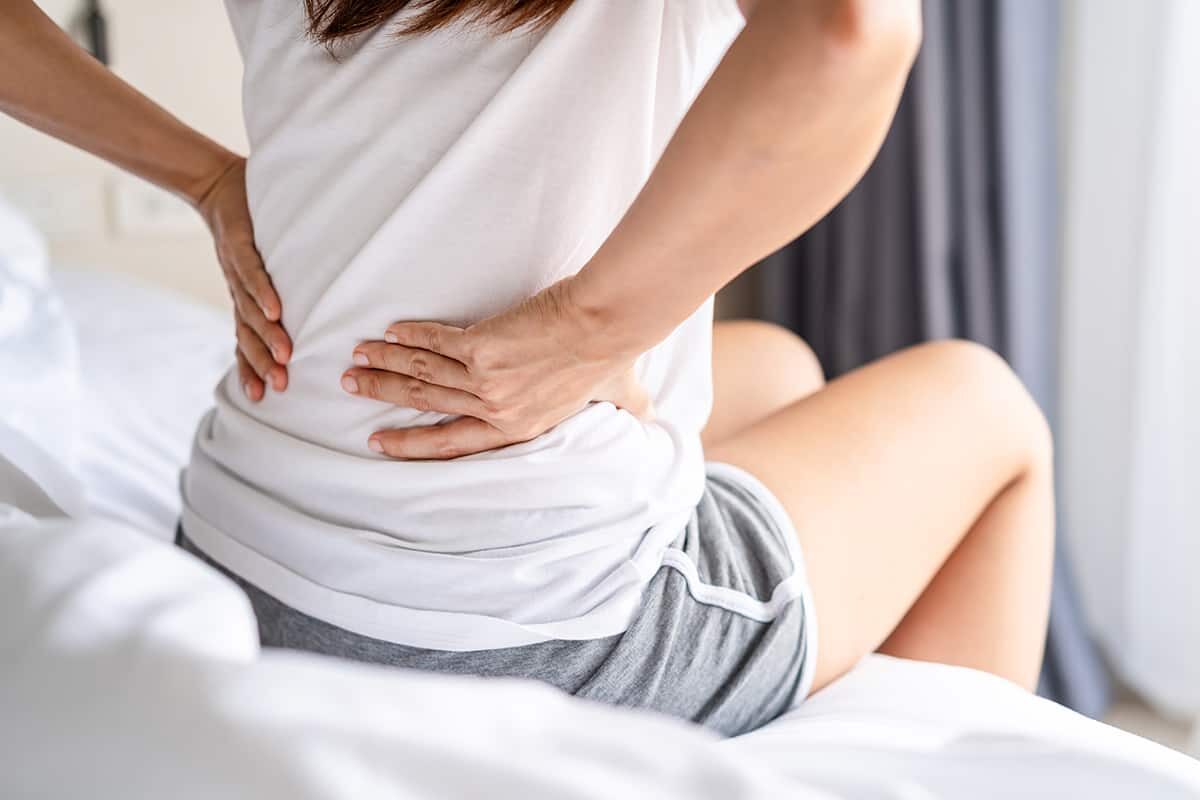
A tummy tuck, also known as abdominoplasty, removes excess fat and skin from the abdomen and tightens the abdominal muscles. Back pain can have many causes, including excess weight, muscle strain, injury, or poor posture. For some people, a tummy tuck may help provide relief from certain types of chronic back pain. However, a tummy tuck does come with risks and potential complications.
What is a tummy tuck?
A tummy tuck is a surgical procedure that removes extra fat and skin from the abdomen and tightens the abdominal muscles. The procedure involves making an incision just above the pubic area to remove excess fat and sagging skin and tighten the abdominal muscles. The result is a flatter, firmer abdominal profile.
What is back pain?
Back pain is a common complaint and can range from a dull ache to a sharp, burning sensation. Back pain occurs when muscles, tendons, ligaments or spinal discs in the back are strained, overused or injured. Excess weight puts extra stress on the back muscles and spine which can lead to or exacerbate back pain. Conditions like muscle strain, injuries, improper posture, and spinal stenosis can also contribute to back pain.
The relationship between tummy tucks and back pain
- Extra weight in the abdominal area puts strain on back muscles and the spine which can lead to back pain. Losing the excess fat and tightening abdominal muscles during a tummy tuck helps relieve this strain by improving core stability and spine support.
- Strengthening and tightening abdominal muscles helps improve posture and spine alignment. Good posture prevents muscle strain and injuries which can contribute to back pain.
- The fat removed during a tummy tuck may contain substances that inflame back tissues and cause pain. Removing this fat can help reduce inflammation related back pain.
How does a tummy tuck help with back pain?
- Improves core stability and spine support. Tightened abdominal muscles provide more support for the back and spine, reducing strain.
- Corrects posture. Stronger abdominal muscles help maintain a proper upright posture, preventing slouching and hunching which can lead to back pain.
- Reduces inflammation. Removing excess fatty tissue during a tummy tuck may decrease inflammation that contributes to back pain.
- Strengthens muscles. In addition to tightening abdominal muscles, a tummy tuck also strengthens the muscles, allowing them to better support the back.
What are the risks and complications of a tummy tuck?
- Infection. There is a small risk of infection at the incision site or within the abdomen. Signs of infection include increasing pain, redness, swelling, or fever.
- Blood clots. Blood clots can form in the legs or lungs after surgery. Blood thinners and compression stockings are used to minimize the risk.
- Fluid build up. Excess fluid may accumulate under the incision site, requiring drainage.
- Numbness. Part of the lower abdomen may remain numb for several months after surgery due to nerve damage. Sensation often returns over time but some loss of feeling may be permanent.
- Scarring. A tummy tuck results in a long scar across the lower abdomen that will fade over time but never completely disappear.
- Loss of belly button appearance. The belly button is reattached in a new position, resulting in a slightly different shape and appearance.
Who is a good candidate for a tummy tuck?
The ideal candidate for a tummy tuck is someone who:
- Is in good health with a stable body weight.
- Has excess fat and sagging skin in the abdomen that does not improve with diet and exercise.
- Has gone through significant weight loss that has left extra folds of skin.
- Has abdominal muscles weakened from pregnancy or aging.
- Has chronic back pain caused or exacerbated by poor abdominal muscle tone or excess weight.
- Does not plan to lose a significant amount of weight after the procedure.
- Does not smoke or is able to stop smoking for a certain period before and after surgery.
- Has realistic expectations about the results from abdominoplasty.
What is the recovery process for a tummy tuck?
- Patients will have swelling, bruising, and discomfort for several weeks. Pain medication and a compression garment can help minimize discomfort.
- Drains will be inserted during surgery to remove excess fluid. The drains stay in place for 7-14 days before removal.
- Normal activities can resume in 2-4 weeks but strenuous exercise should be avoided for 6 weeks.
- Most people can return to work in 2-3 weeks but full recovery takes 3-6 months.
- Scarring will fade over several months to a year. Silicone gel or laser treatments may help minimize the appearance of scars.
What are the long-term results of a tummy tuck?
- A flatter, firmer abdominal area. Extra fat and loose skin are removed, and abdominal muscles are tightened.
- An improved abdominal contour. The waistline is more defined and balanced.
- Better posture and core strength. Stronger abdominal muscles provide better back support and encourage an upright posture.
- Relief from back pain. Excess weight and strain on the back due to weakened abdominal muscles are reduced. Inflammation may also decrease.
- Enhanced confidence. A flat, toned abdomen can boost self-confidence and make it easier to enjoy an active lifestyle.
Conclusion
A tummy tuck is an effective way to remove excess fat and skin in the abdomen and repair weakened abdominal muscles. For some people with chronic back pain, a tummy tuck may help provide long term relief through weight loss, improved abdominal muscle tone, reduced inflammation and better posture. However, a tummy tuck does come with risks and a lengthy recovery process. The best candidates are people in good health who understand the complications and have realistic expectations about results.